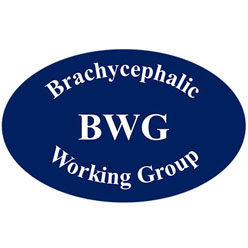Research shows Pugs at highest risk of obesity
27 January 2023
This January, whilst many people make their own healthy new year’s resolutions, vets and welfare organisations are urging Pug owners to ensure their pet is well-exercised and isn’t overweight, in a bid to tackle the serious health and welfare complications associated with obesity.
Research from the Royal Veterinary College (RVC), a member of the Brachycephalic Working Group, which works to improve the health and welfare of flat-faced dogs, indicates that Pugs are at highest risk of obesity out of all dog breeds. Obesity is also by far the most commonly diagnosed disorder in the breed; the research reveals that almost one in five (17%) Pugs are formally diagnosed with obesity each year, and Pugs are more than three times more likely to be obese, compared to other dogs.
The Brachycephalic Working Group, made up of vets, welfare organisations, universities, the government, breeders and owners, is now urging owners to play their part to prevent obesity in flat-faced dogs – especially Pugs due to their higher risk – in order to protect welfare. Obesity carries severe welfare risks for dogs; including a shorter lifespan, reduced quality of life and higher frequencies of serious health conditions including arthritis, breathing problems, heart disease, diabetes mellitus and certain types of cancer.
By managing a dog’s diet, and importantly, providing dogs with a good amount of exercise, owners can help to avoid weight related issues. This is also a legal requirement under the Animal Welfare Act 2006 which includes the provision of a suitable diet as one of the duties of an owner to ensure good welfare.
To underline this, The Kennel Club alongside Pug breed clubs, which are made up of breed enthusiasts, owners and breeders, has reviewed the ‘Pug breed standard’ – a description and guide to what a breed should look and act like – to be explicit that Pugs must not be obese. All breed standards, which are continually reviewed in line with the latest breed health research, have a preface to make clear the importance of avoiding extreme features that can lead to health problems.
Dr Dan O’Neill, who led the RVC research into obesity in Pugs and is Chair of the Brachycephalic Working Group, commented: “Many individual dogs in several breeds including Pugs have a high impulse to overeat embedded in their genes, but development of obesity in Pugs is not inevitable – it also depends on their access to food. Pug owners absolutely have the power to improve their dog’s health and welfare by keeping them lean and fit. The research is clear that obesity is the runaway top disorder in Pugs and as people turn their attention to their own healthy New Year’s resolutions, it is an opportune time to remember that we can also make a resolution to do something that will improve the quality of life for our dogs too.
“We know that obesity is hugely harmful for typically-shaped dogs, but research shows the harms are much greater for flat-faced dogs, like Pugs, English Bulldogs and French Bulldogs where it can exacerbate the risk and severity of issues with breathing that are already so common in these dogs.
“Benefitting from collaboration between owners, the veterinary profession and academics, the ongoing research into obesity helps Pug owners especially to understand why vigilance around their dog’s weight is so important. The updated wording in the breed standard is very clear about the importance of keeping flat-faced dogs such as Pugs at a healthy weight. We hope these clear messages will bring about meaningful change away from the older and harmful perception that Pugs should be chubby. No dog should ever be obese.”
Practical tips from vets at PDSA And the British Veterinary Association for owners include:
Vets at the University of Cambridge and Pug breed experts have also developed a scoring system to help Pug owners to assess if their dog is a healthy weight, which is available at pughealth.org.uk/pug-obesity/
Owners of any dog can find Government advice on important aspects of dog care in its Code of Practice for the Welfare of Dogs: bit.ly/3Jg5CDI
The Brachycephalic Working Group’s position and research-base on obesity in brachycephalic dogs, and further calls to action to owners, breeders and vets to reduce the disease, can be found at bit.ly/3GYaWbM
The BWG has also committed to a five-year strategy to accelerate its work to improve the health and welfare of both current and future generations of flat-faced dogs, available at bit.ly/3DpuGV9
